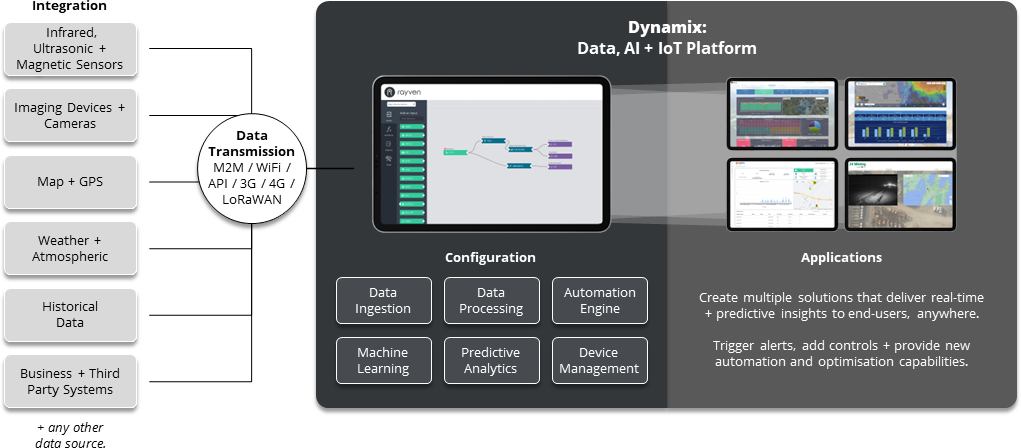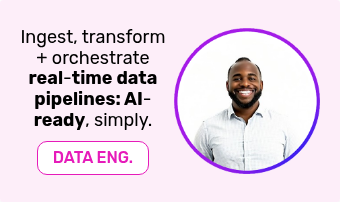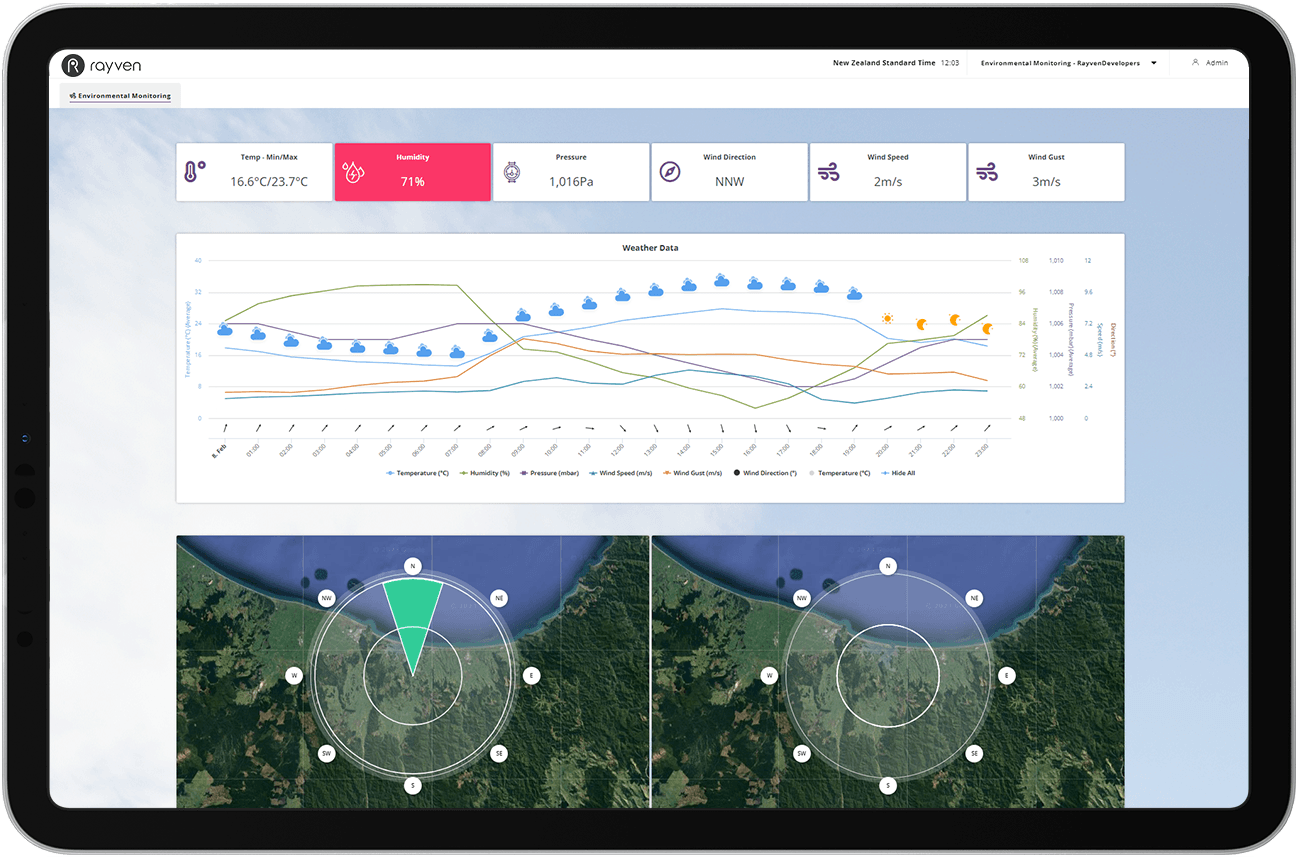Smart Bin Monitoring Solutions.
Improve efficiency with remote, real-time monitoring + predictive insights, simply.
Easily customise + deliver a Smart Bin Monitoring solution that delivers efficiency, maintenance, ESG + bottom-line benefits, fast.
Monitor + manage real-time air quality and pollution with a custom, real-time solution.
Centralise + analyse waste-levels and bin condition data in real-time, delivering real-world efficiency, sustainability + management benefits.
Use our Rayven Platform's Smart Bin Monitoring solution template as your starting point and integrate infield devices, third-party systems, and assets to deliver real-time and predictive insights on performance and how it can be improved.
Our all-in-one, easy-to-use technology comes complete with universal integration, machine learning, automation, and AI capabilities; enabling you to deliver real-time condition-based and predictive insights that improve waste management, spot trends + uncovers inefficiencies.
Remote, real-time bin + waste monitoring.
Deploy sensors or Smart Bins and easily integrate them with a central platform to get accurate, real-time metrics on usage, capacity, health + more, without ever having to visit the site.
Set thresholds + trigger alerts: be condition-based.
Set-up thresholds and trigger alerts, moving from scheduled to condition-based management. Use automation + control to alert people, optimise machinery, and improve.
Build interactive dashboards + drill into performance.
Build custom dashboards to explore performance. Interrogate sources, analyse the different metrics. Easily interrogate Big Data sets.
Add custom AI + universal automation.
Our solution enables you to utilise inbuilt predictive analytics with your own and third-party data to predict outcomes and enable you to better plan for future needs.
Fits all existing
hardware + technologies.
Our Smart Bin Monitoring solution integrates with any machinery, system, sensor, or data store - guaranteed. Use it as a centralised real-time data processing platform.
Monitor more: add fleet, traffic, waste processing - anything.
Incorporate different in-field sensors and data sources to develop a complete, real-time view of operations + enhance the way you monitor and manage a range of services.
Rayven has free + low-cost options, making it affordable for every business.
How your Smart Bin Monitoring solution is put together.
New and existing data, (both real-time and historical), alongside custom logic, thresholds, and predictive analytics is used to create your custom Smart Bin Monitoring solution.

Our solution can handle data from anywhere in any format, and at all levels:
Level 1 Data: Manual entry of data via custom forms built within our solutions.
Level 2 Data: Bespoke spreadsheet ingestion via FTP or manual uploads.
Level 3 Data: Integration of real-time data from OT / IT systems and corporate systems.
Level 4 Data: Real-time integration with in-field technologies, asset systems + in-field sensors.
Your Smart Bin Monitoring solution will integrate with anything, including:
Smart Bin Monitoring solution FAQs.
Question: What is a Smart Bin Monitoring solution, and why is it important?
A Smart Bin Monitoring solution integrates the Internet of Things (IoT) technology into waste management. New Smart Bins or older assets retrofitted with sensors and communication device monitor the fill-level of bins, enabling real-time tracking of waste accumulation. This collected data is then transmitted to a central system or cloud-based platform where it's analysed, processed, and visualised via dashboard within custom applications.
In advanced systems, the technology can even differentiate between types of waste, such as recyclables, organics, or general trash; assess the health of the asset itself, directing maintenance; leverages predictive analytics to predict future needs; as well as advanced workflow and custom threshold and alerting means to direct operations automatically.
This modern approach to waste management offers numerous advantages. Firstly, it optimises collection routes, ensuring that trucks are dispatched only when bins are full, leading to fuel and labour savings and reducing greenhouse gas emissions. It also helps in avoiding overflows, ensuring cleaner public spaces and minimising health risks. Additionally, it provides valuable data analytics, aiding in decision-making, forecasting, and urban planning, which can ultimately lead to more efficient waste management systems.
Question: What's involved in a Smart Bin Monitoring solution?
A Smart Bin Monitoring solution is a blend of hardware, software, and communication technologies that work in tandem to improve waste management. Here's a breakdown of the components involved:
- Sensors + Smart Bins: In addition to off-the-shelf Smart Bins, retrofitted sensors can be used to measure fill levels, identify types of waste, as well as assess whether assets are in need of maintenance. Ultrasonic sensors are commonly used to detect fill levels by measuring the distance between the sensor and the waste, with advanced sensors even able to detect parameters like temperature, which can be crucial in monitoring organic waste.
- Data collection + transmission: These sensors collect data continuously or at set intervals. The data is then transmitted wirelessly to a central server or platform via wireless networks like LoRaWAN (Long Range), NB-IoT (Narrowband IoT), or regular Wi-Fi and phone networks. Advanced IoT platforms can handle data from thousands of sensors simultaneously.
- Real-time data analysis: Advanced platforms analyse the data to generate insights into the sources and waste levels. Patterns and trends can be identified and delivered to people via data visualisations and dashboards.
- Mapping: Visualisation tools can provide real-time maps as well as predicted needs and future statuses based on historical data. These maps can be updated in real-time, allowing businesses and public administrators to make informed operational decisions.
- Responsive actions + alerts: In advanced setups, the system can be integrated with communication systems and on-site machinery to deliver instant, automated optimisations. For instance, it is possible to create a solution that would direct users to the closest site using applications or identify machinery onsite that's in need of immediate maintenance.
- Machine Learning + predictive analytics: Use an advanced platform's inbuilt capabilities to analyse multiple data sources, both real-time and historical data, to predict future needs. Use it to make better decisions both via human and AI.
- Application: Some platforms can support worker and public-facing apps and dashboards that deliver critical insights in real-time. These enable those responsible for monitoring and reporting on problematic areas to better manage sites, as well as supply necessary data to connected parties.
Question: How can real-time bin monitoring help government organisations and businesses?
Real-time bin monitoring transforms waste management from a reactive, schedule-driven process to a proactive, data-driven one. This not only leads to immediate operational benefits but also long-term strategic advantages for both government organisations and businesses:- Optimised + on-demand collection routes: For governments, especially in urban areas, managing waste collection fleets is a significant expense. Real-time bin monitoring allows for dynamic route planning, ensuring trucks are dispatched only when bins are nearing their capacity. This reduces the number of trips, saving fuel, reducing emissions, and decreasing wear and tear on vehicles.
- Reduced overflow + litter: Overflows can lead to public health concerns, attract pests, and create unsightly litter. For governments, this can translate into increased clean-up costs and potential health risks. Real-time monitoring can prevent overflows by ensuring timely pickups.
- Operational savings: Both government and industrial entities can realise direct cost savings. Fewer trips mean less fuel consumption and reduced labour hours.
- Environmental benefits: Efficient waste collection means fewer vehicles on the road, leading to reduced greenhouse gas emissions. For governments aiming for sustainability targets, and industries focusing on green operations, this is a valuable benefit.
- Data-driven decision-making: The data generated by real-time monitoring provides insights into waste generation patterns, peak waste generation times, and more. Governments can use this data for urban planning, while industries can adapt their waste generation processes.
- Compliance + reporting: Many regions have strict regulations on waste management. Real-time monitoring ensures compliance by providing data logs and reports that can be presented during audits or inspections.
- Safety improvements: Overflowing bins or hazardous waste accumulation can be safety hazards. Real-time monitoring can alert relevant authorities to these risks in a timely manner, allowing them to take corrective action.
- Waste segregation + recycling: For industries producing various types of waste, monitoring can help in ensuring proper segregation. This is crucial if recyclables or hazardous wastes are part of the waste stream, ensuring they are treated appropriately.
- Capacity planning: Governments and businesses can use the data to plan future infrastructure. For instance, if certain areas consistently generate more waste, additional bins or larger bins can be allocated there.
Question: What are the key features to look for in a Smart Bin Monitoring solution?
When purchasing or creating a Smart Bin Monitoring solution, it's crucial to look for:
- Real-time data processing: Get immediate analysis and feedback on operational and maintenance status, and get instant alerts of problems.
- Scalability: Ability to handle data from multiple sensors, assets and third-party systems spread across large areas. Expandability to accommodate growth in monitoring infrastructure and different sites - without blowing out costs.
- Data analytics platform: Advanced tools for visualising trends and patterns. Predictive analytics for anticipating potential issues.
- Integration: Compatibility with other IoT systems, hardware, legacy business systems, as well as external data sources and SaaS. API support for custom integrations and applications.
- Geo-tagging +mapping: Precise location data and visualisation capabilities using maps for spatial understanding of sites.
- Secure data transmission: Encryption and secure protocols to protect data integrity. Measures to prevent unauthorised access.
- Alerting +notification system: Customisable thresholds for alerts. Multiple notification channels (email, SMS, app notifications).
- Remote control, configuration + device management: Ability to adjust sensors and other machinery remotely. Over-the-air updates for firmware and software.
- Cloud connectivity + storage: Data stored in a secure cloud environment. Easy access to historical data and trends.
- User-friendly, fully-customisable interfaces: Intuitive dashboards and reporting tools, tailorable for different uses. Mobile access for on-the-go monitoring.

























































